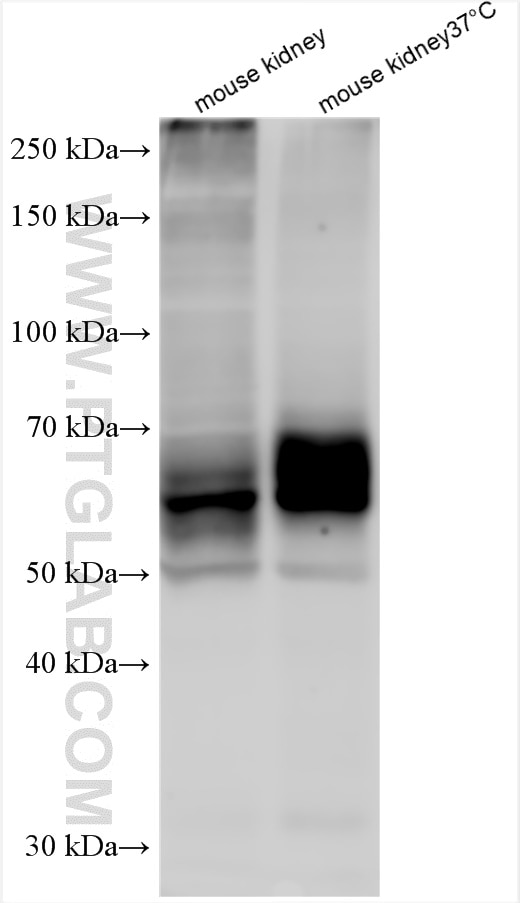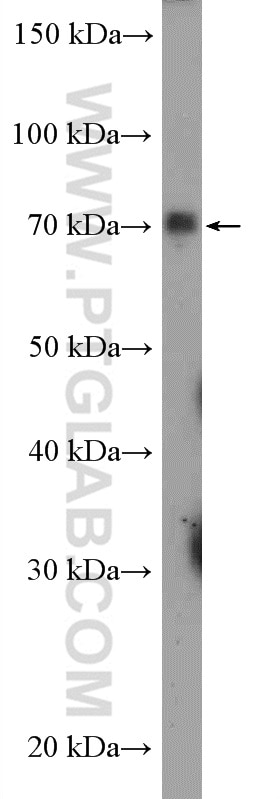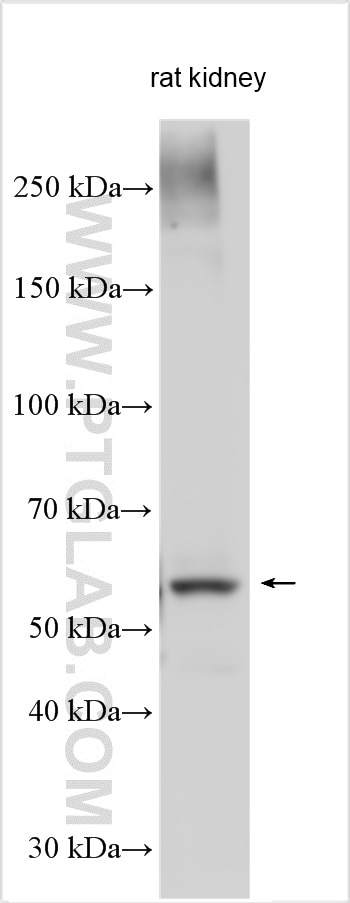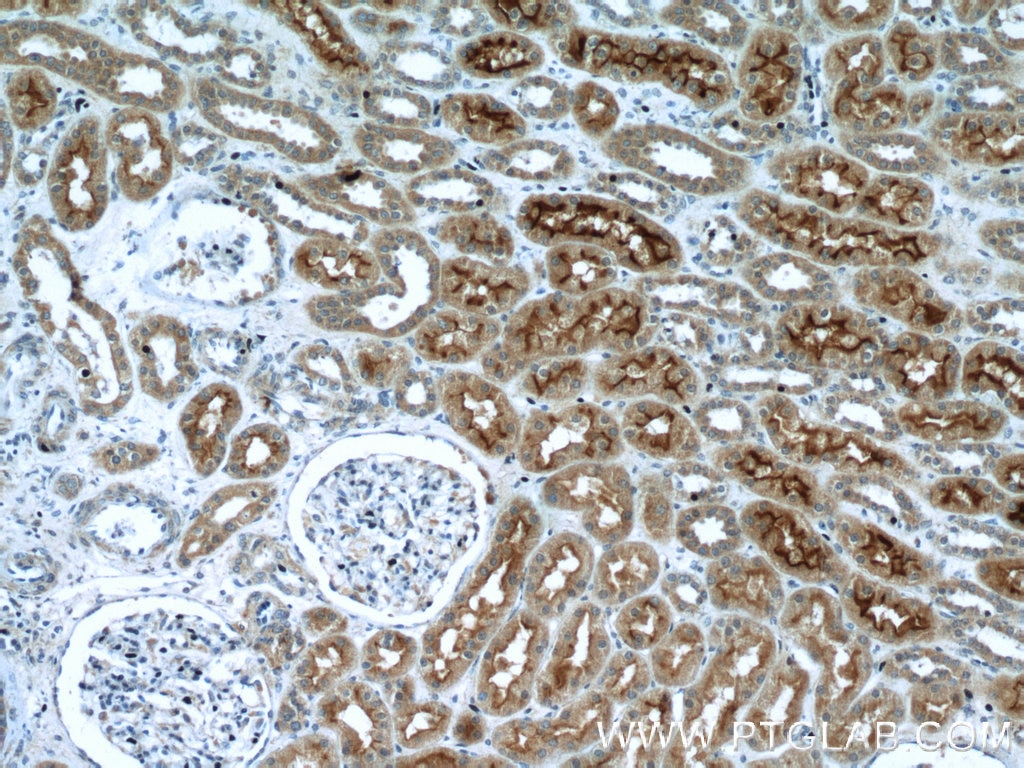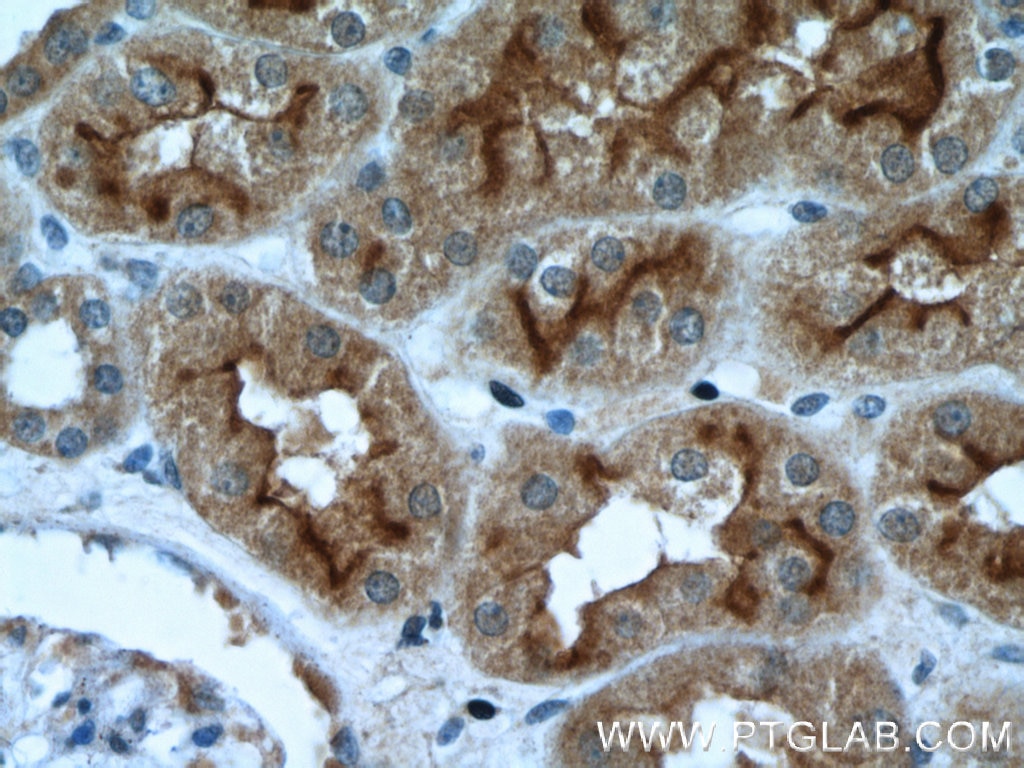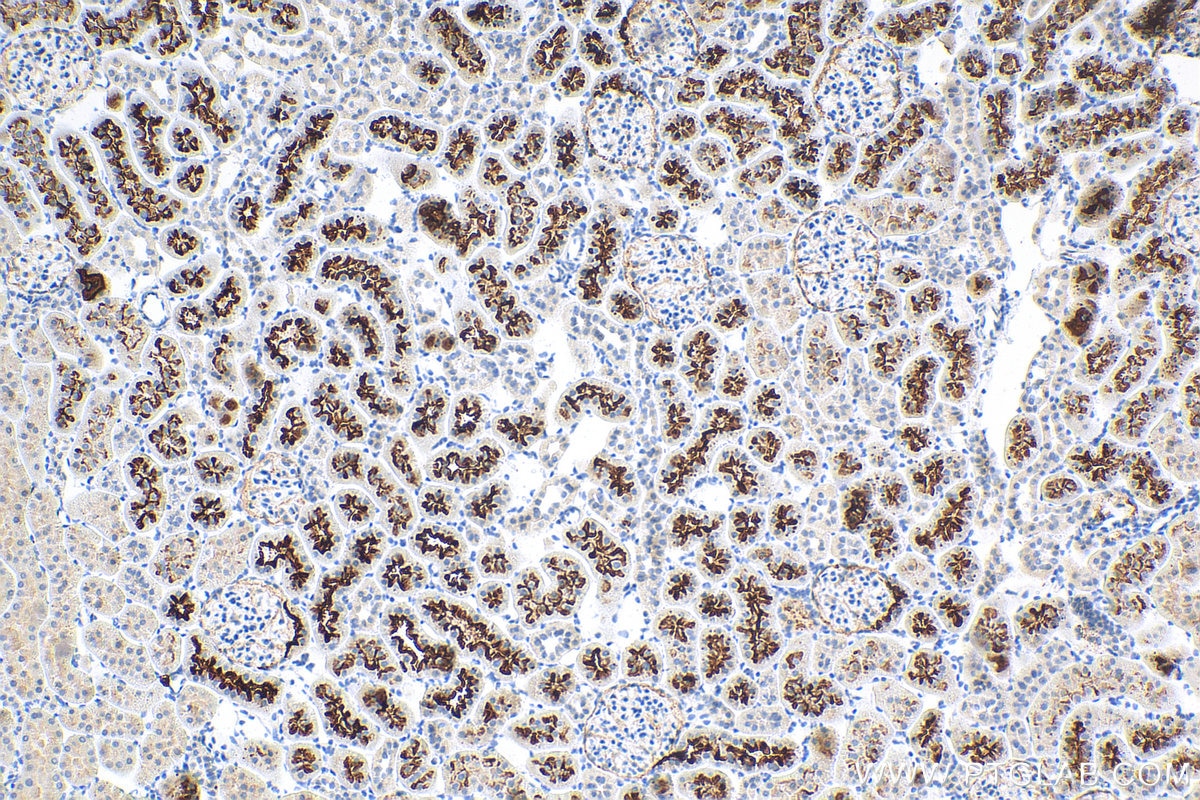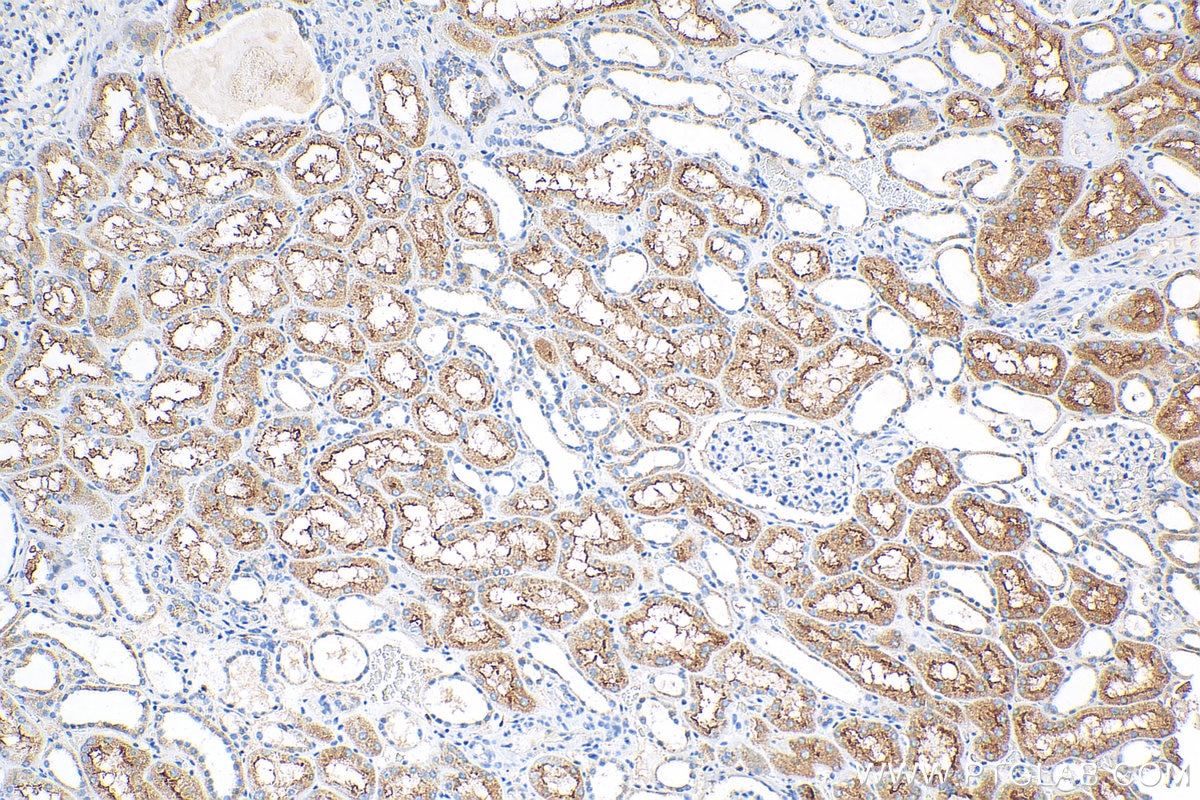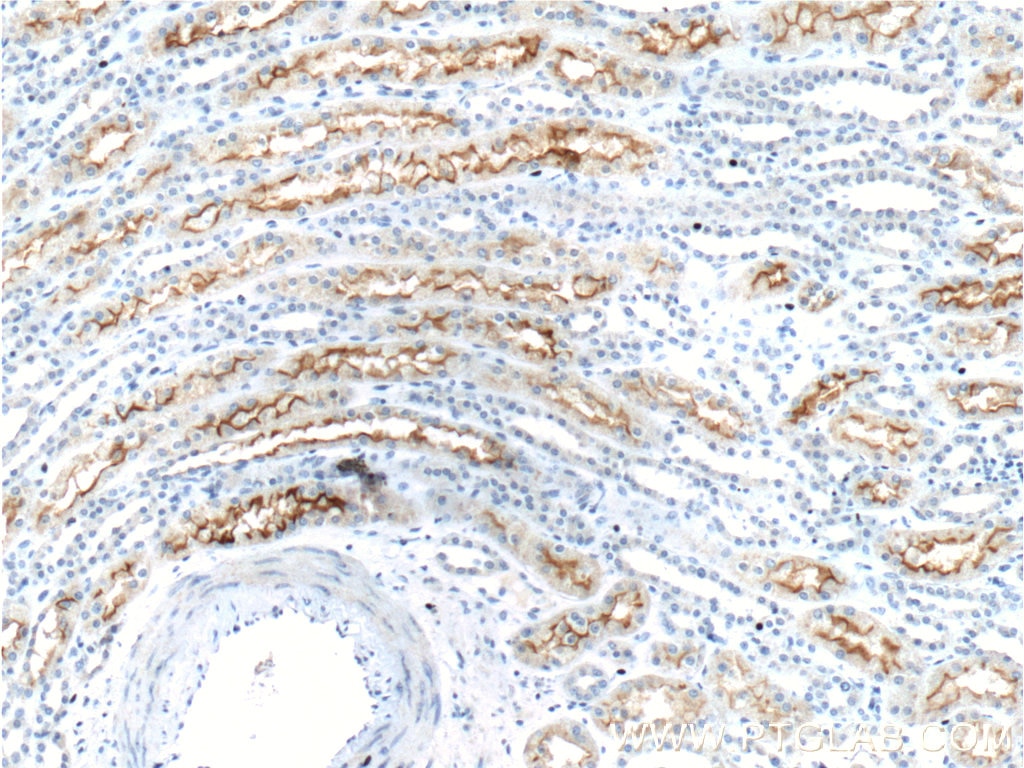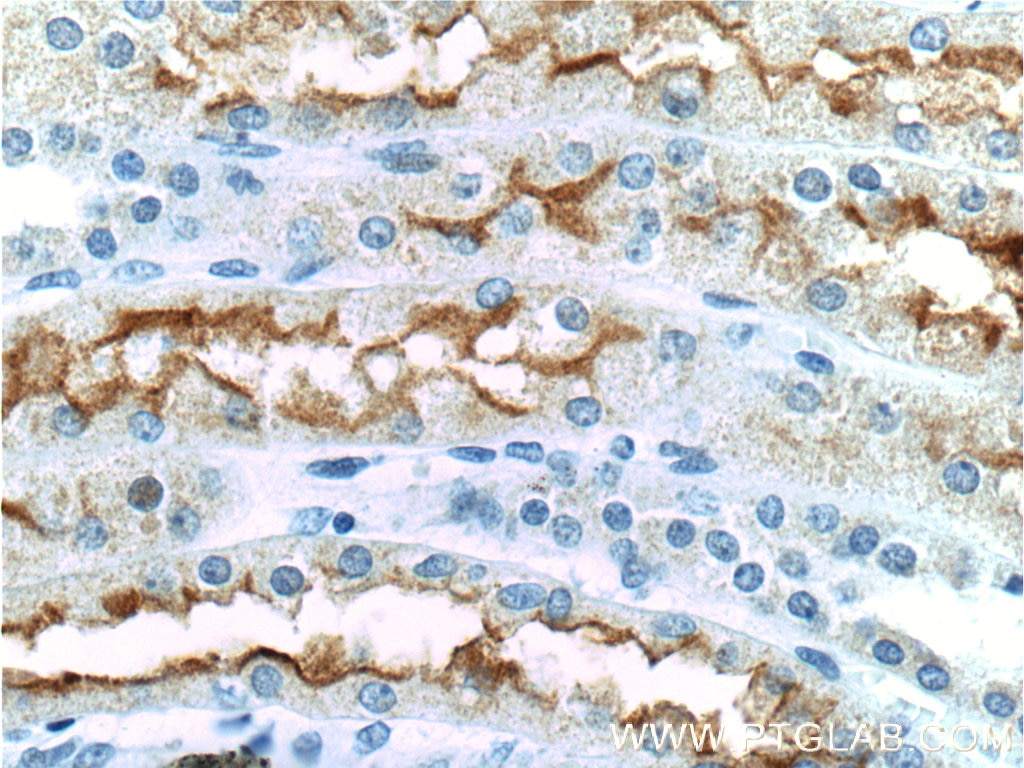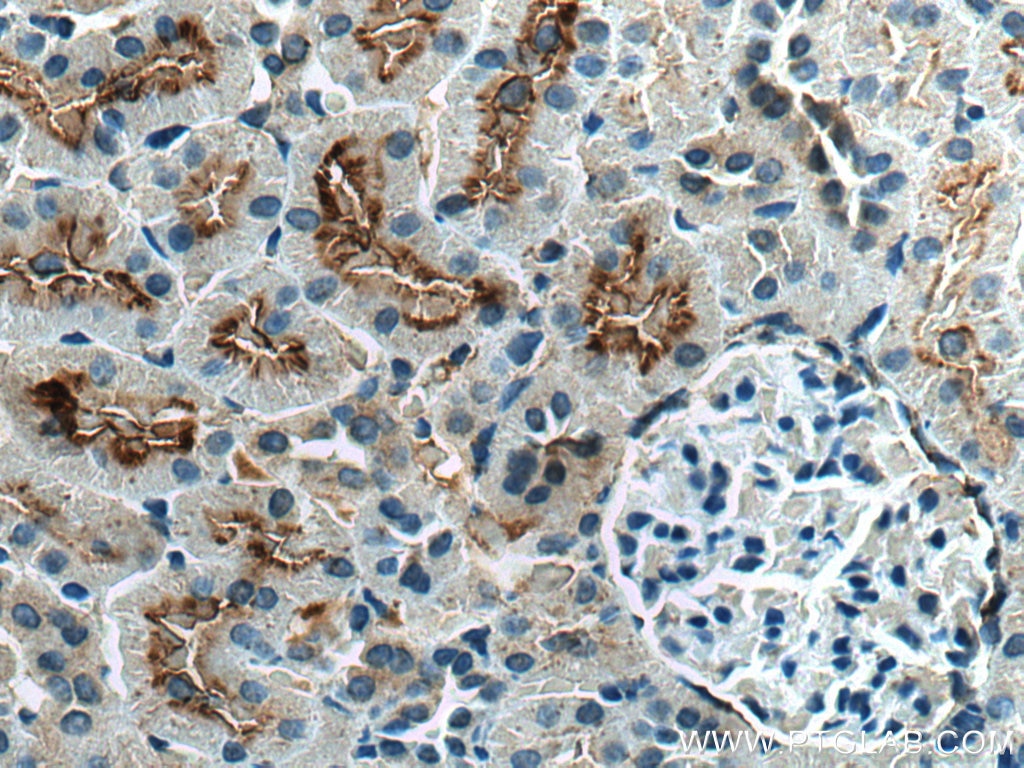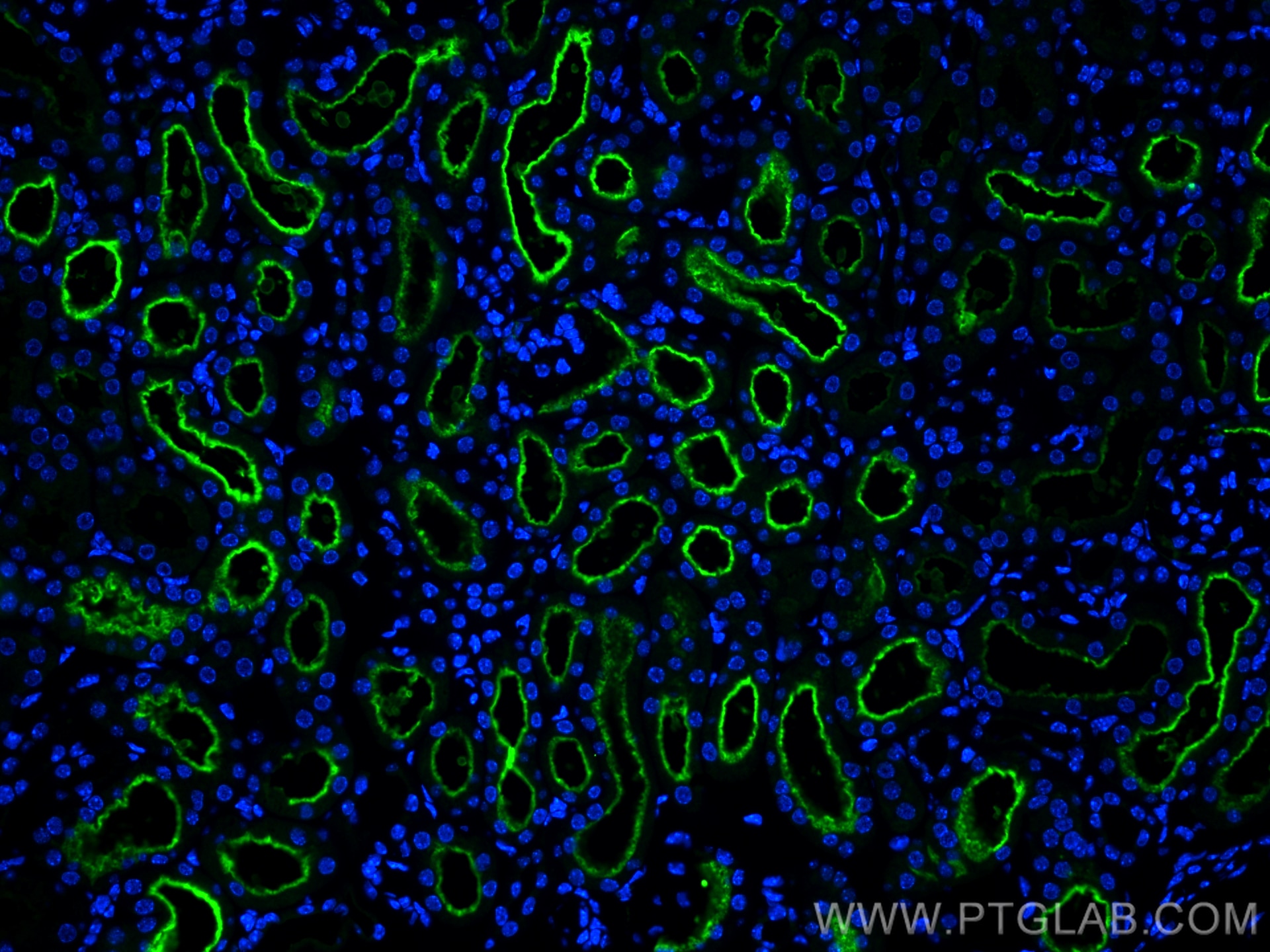- Phare
- Validé par KD/KO
Anticorps Polyclonal de lapin anti-SGLT2
SGLT2 Polyclonal Antibody for WB, IHC, IF-P, ELISA
Hôte / Isotype
Lapin / IgG
Réactivité testée
Humain, rat, souris
Applications
WB, IHC, IF-P, IP, ELISA
Conjugaison
Non conjugué
N° de cat : 24654-1-AP
Synonymes
Galerie de données de validation
Applications testées
| Résultats positifs en WB | tissu rénal de souris, cellules A549, tissu rénal de rat |
| Résultats positifs en IHC | tissu rénal humain, tissu rénal de rat il est suggéré de démasquer l'antigène avec un tampon de TE buffer pH 9.0; (*) À défaut, 'le démasquage de l'antigène peut être 'effectué avec un tampon citrate pH 6,0. |
| Résultats positifs en IF-P | tissu rénal de souris, |
Dilution recommandée
| Application | Dilution |
|---|---|
| Western Blot (WB) | WB : 1:500-1:3000 |
| Immunohistochimie (IHC) | IHC : 1:200-1:800 |
| Immunofluorescence (IF)-P | IF-P : 1:50-1:500 |
| It is recommended that this reagent should be titrated in each testing system to obtain optimal results. | |
| Sample-dependent, check data in validation data gallery | |
Applications publiées
| KD/KO | See 4 publications below |
| WB | See 25 publications below |
| IHC | See 16 publications below |
| IF | See 17 publications below |
| IP | See 2 publications below |
Informations sur le produit
24654-1-AP cible SGLT2 dans les applications de WB, IHC, IF-P, IP, ELISA et montre une réactivité avec des échantillons Humain, rat, souris
| Réactivité | Humain, rat, souris |
| Réactivité citée | rat, Humain, souris |
| Hôte / Isotype | Lapin / IgG |
| Clonalité | Polyclonal |
| Type | Anticorps |
| Immunogène | SGLT2 Protéine recombinante Ag19163 |
| Nom complet | solute carrier family 5 (sodium/glucose cotransporter), member 2 |
| Masse moléculaire calculée | 672 aa, 73 kDa |
| Poids moléculaire observé | 69-70 kDa |
| Numéro d’acquisition GenBank | BC131542 |
| Symbole du gène | SGLT2 |
| Identification du gène (NCBI) | 6524 |
| Conjugaison | Non conjugué |
| Forme | Liquide |
| Méthode de purification | Purification par affinité contre l'antigène |
| Tampon de stockage | PBS with 0.02% sodium azide and 50% glycerol |
| Conditions de stockage | Stocker à -20°C. Stable pendant un an après l'expédition. L'aliquotage n'est pas nécessaire pour le stockage à -20oC Les 20ul contiennent 0,1% de BSA. |
Informations générales
Sodium-glucose cotransporter 2 (SGLT2), encoded by SLC5A2, utilizes the electrochemical sodium gradient to transport glucose against the cell's internal concentration gradient. Mainly expressed on brush border membrane (BBM) of epithelial cells in the early segment of the proximal tubule, SGLT2 mediates most of the glucose reabsorption by the kidney overall. Inhibition of SGLT2 could improve glucose homeostasis of diabetic patients, which has been considered as a novel strategy for diabetes treatment.
Protocole
| Product Specific Protocols | |
|---|---|
| WB protocol for SGLT2 antibody 24654-1-AP | Download protocol |
| IHC protocol for SGLT2 antibody 24654-1-AP | Download protocol |
| IF protocol for SGLT2 antibody 24654-1-AP | Download protocol |
| Standard Protocols | |
|---|---|
| Click here to view our Standard Protocols |
Publications
| Species | Application | Title |
|---|---|---|
Circulation Sodium Glucose Cotransporter-2 Inhibitor Empagliflozin Reduces Infarct Size Independently of Sodium Glucose Cotransporter-2 | ||
Cancer Lett SGLT2 promotes pancreatic cancer progression by activating the Hippo signaling pathway via the hnRNPK-YAP1 axis. | ||
Mol Metab Sodium-glucose co-transporter2 expression and inflammatory activity in diabetic atherosclerotic plaques: Effects of sodium-glucose co-transporter2 inhibitor treatment.
| ||
Int J Mol Sci Redefining the Role of ADAM17 in Renal Proximal Tubular Cells and Its Implications in an Obese Mouse Model of Pre-Diabetes. | ||
Metabolism Sodium-glucose cotransporter 2 inhibition attenuates protein overload in renal proximal tubule via suppression of megalin O-GlcNacylation in progressive diabetic nephropathy. | ||
Front Pharmacol Empagliflozin Alleviates Hepatic Steatosis by Activating the AMPK-TET2-Autophagy Pathway in vivo and in vitro. |
Avis
The reviews below have been submitted by verified Proteintech customers who received an incentive for providing their feedback.
FH Elina (Verified Customer) (03-04-2019) | The antibody is quite specific, used at a 1:200 dilution in mouse kidney. Comparison to a secondary only staining shows some background. Overall it appears to work well in paraffin embedded tissues, (5um thick).
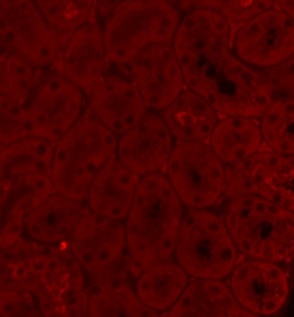 |
